Cover letter examples
Browse a wide range of UK templates and good cover letter examples suitable for recent graduates, experienced professionals, and everyone in between. Our easy-to-use cover letter tool allows you to quickly generate a cover letter for your desired position or customise one of our examples to showcase your unique skills and expertise.

California cover letter template


Account Manager
Auckland cover letter template

Harvard cover letter template

Actor Cover Letter Template
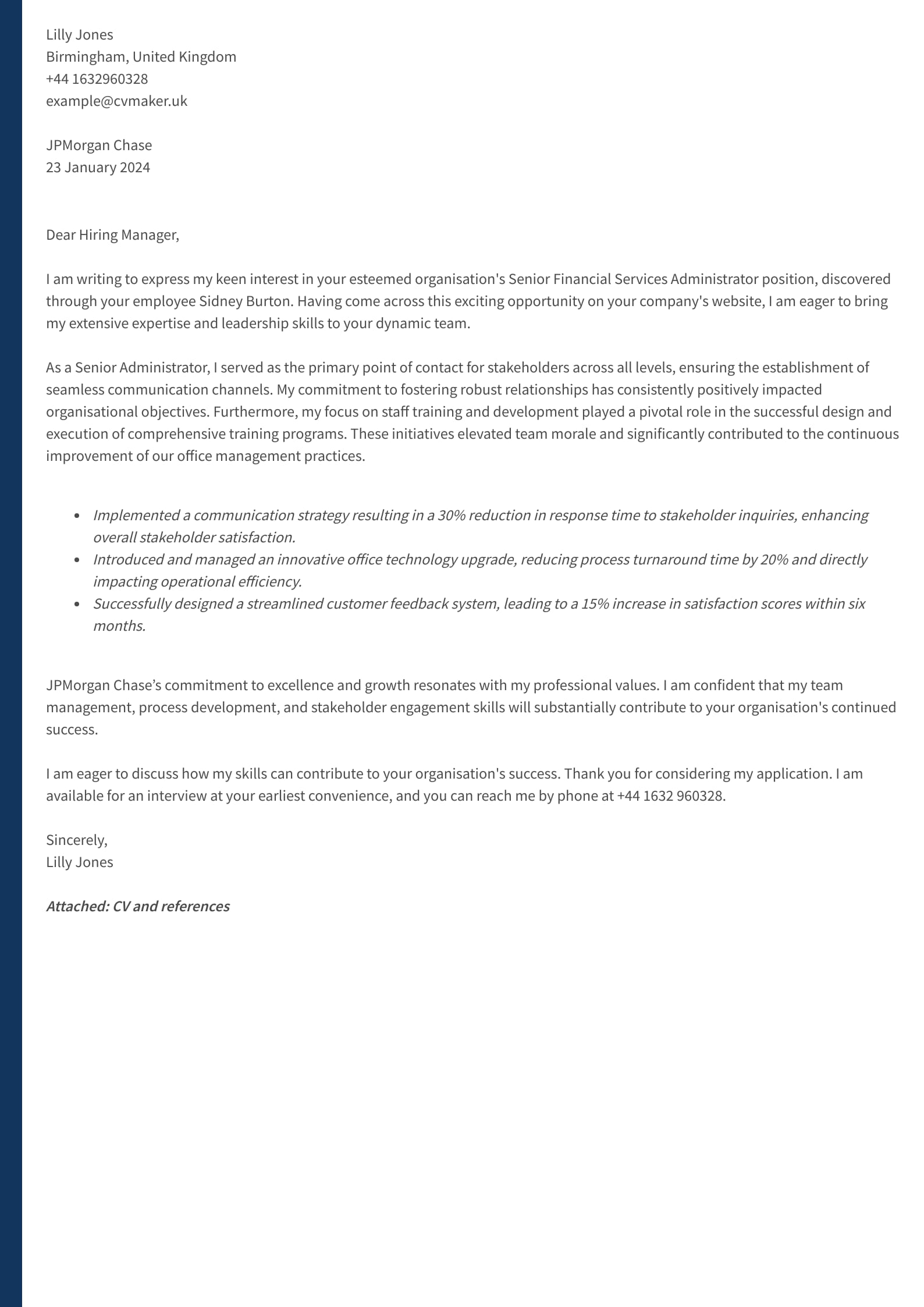
Administrator
Oxford cover letter template
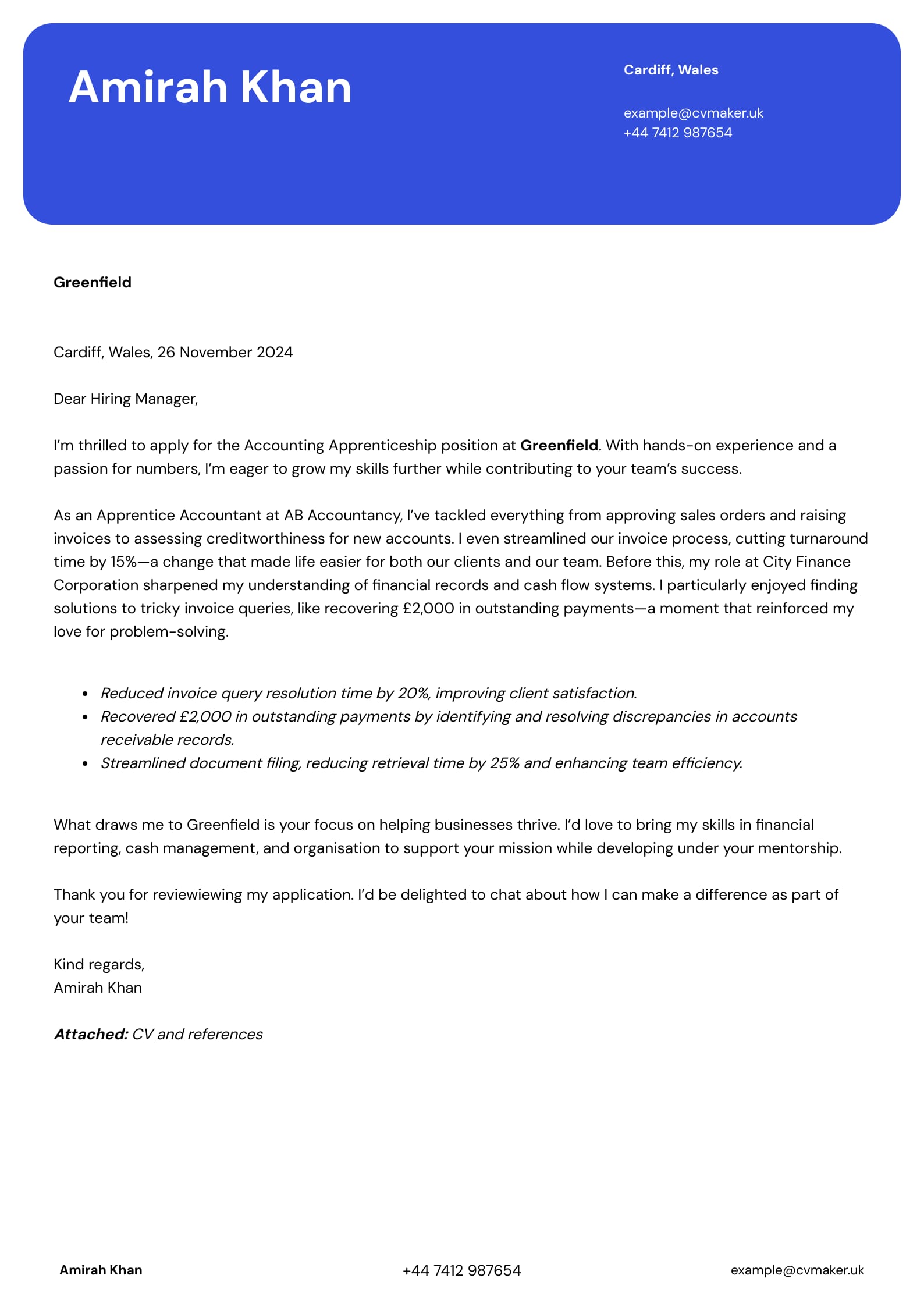
Apprenticeship
Erasmus template

Michigan cover letter template

Columbia cover letter template

Edinburgh cover letter template

Wisconsin cover letter template

Business Analyst

Yale cover letter template

Care Assistant
Otago cover letter template

Career change

Civil Engineer
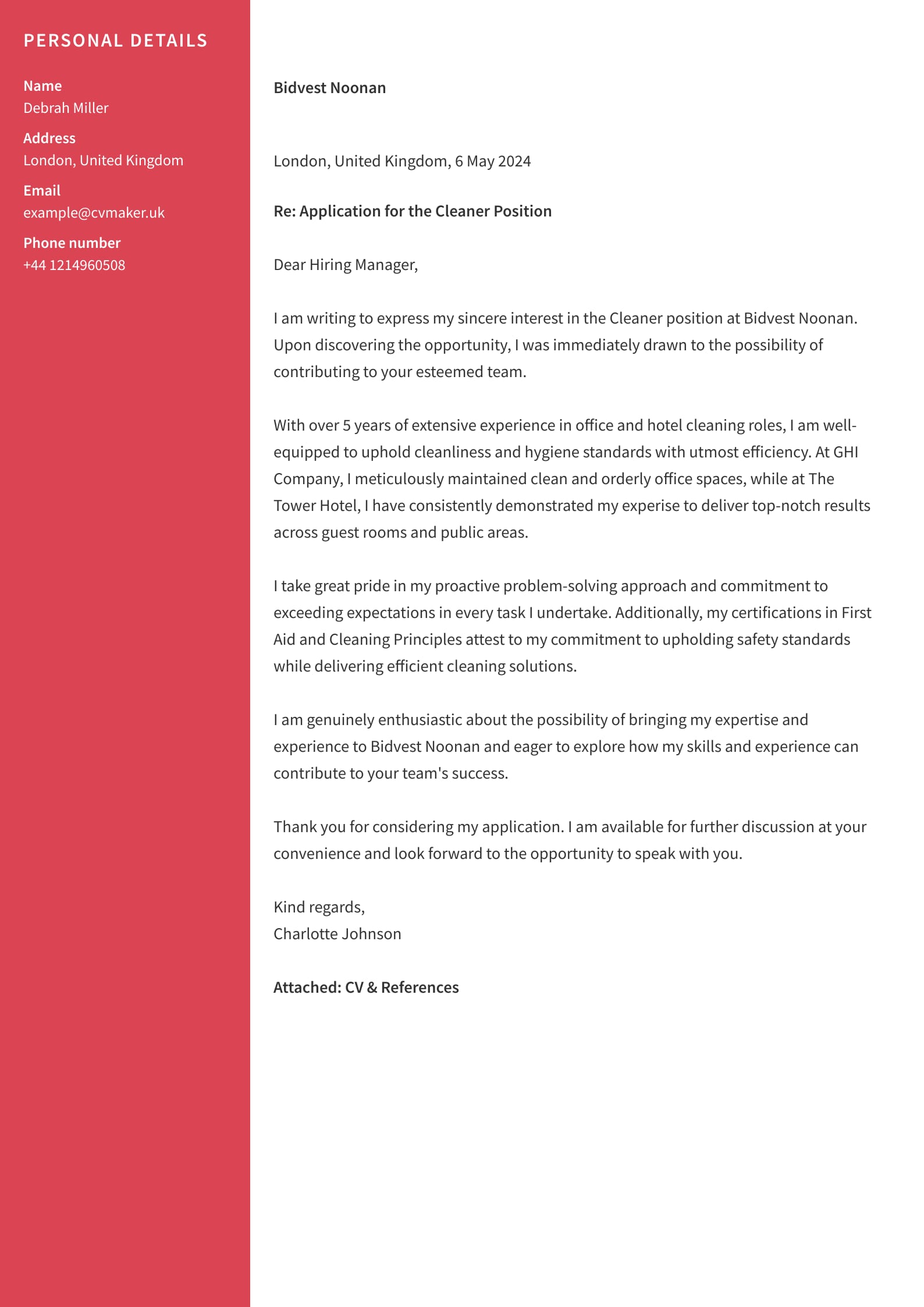
Computer Science

Customer service
Cornell cover letter template

Data Analyst
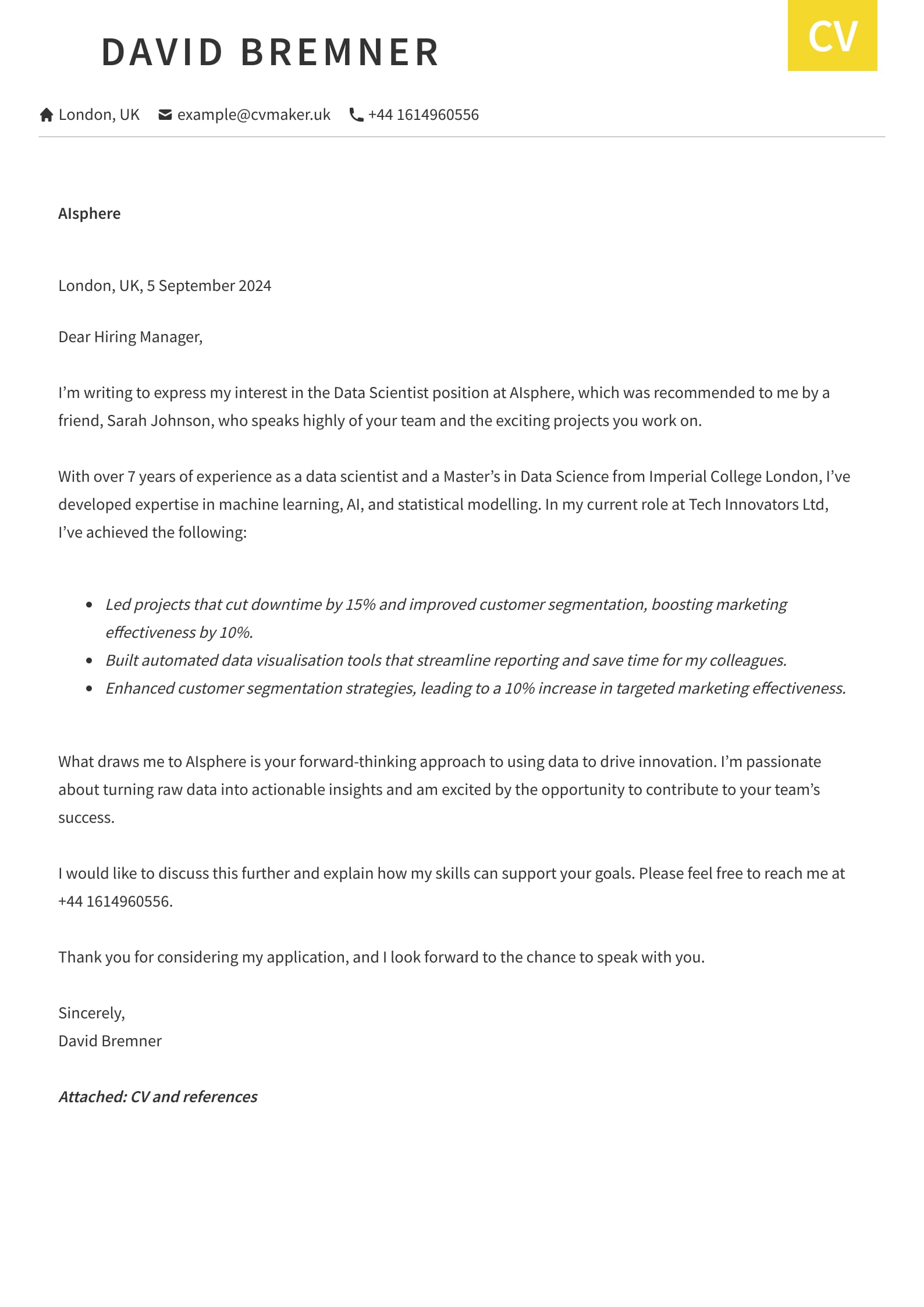
Data Scientist

Wheaton cover letter template

Stanford cover letter template

Erasmus cover letter template

Graphic Designer

Hospitality
Cambridge cover letter template

Human Resources

Princeton cover letter template

Investment Banking

Letter of Interest

Berkley cover letter template
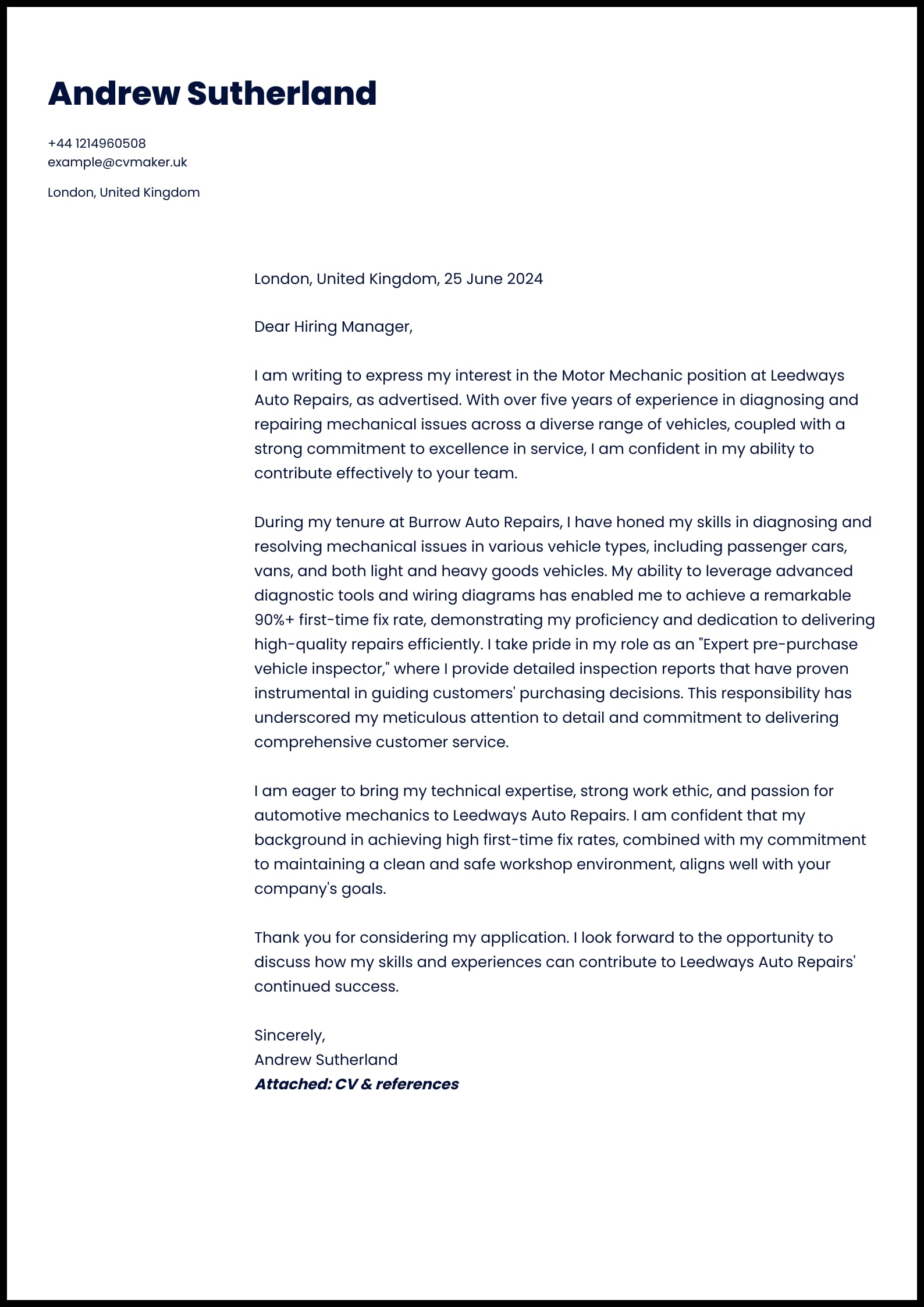
Police Officer
Peking cover letter template

Product Manager

Project Manager

Recruitment

Security guard

Shop Assistant

Short Cover Letter
Berkeley cover letter template

Psychology cover letter template

Receptionist

Simple Cover Letter

Supermarket

Support Worker

Teaching Assistant
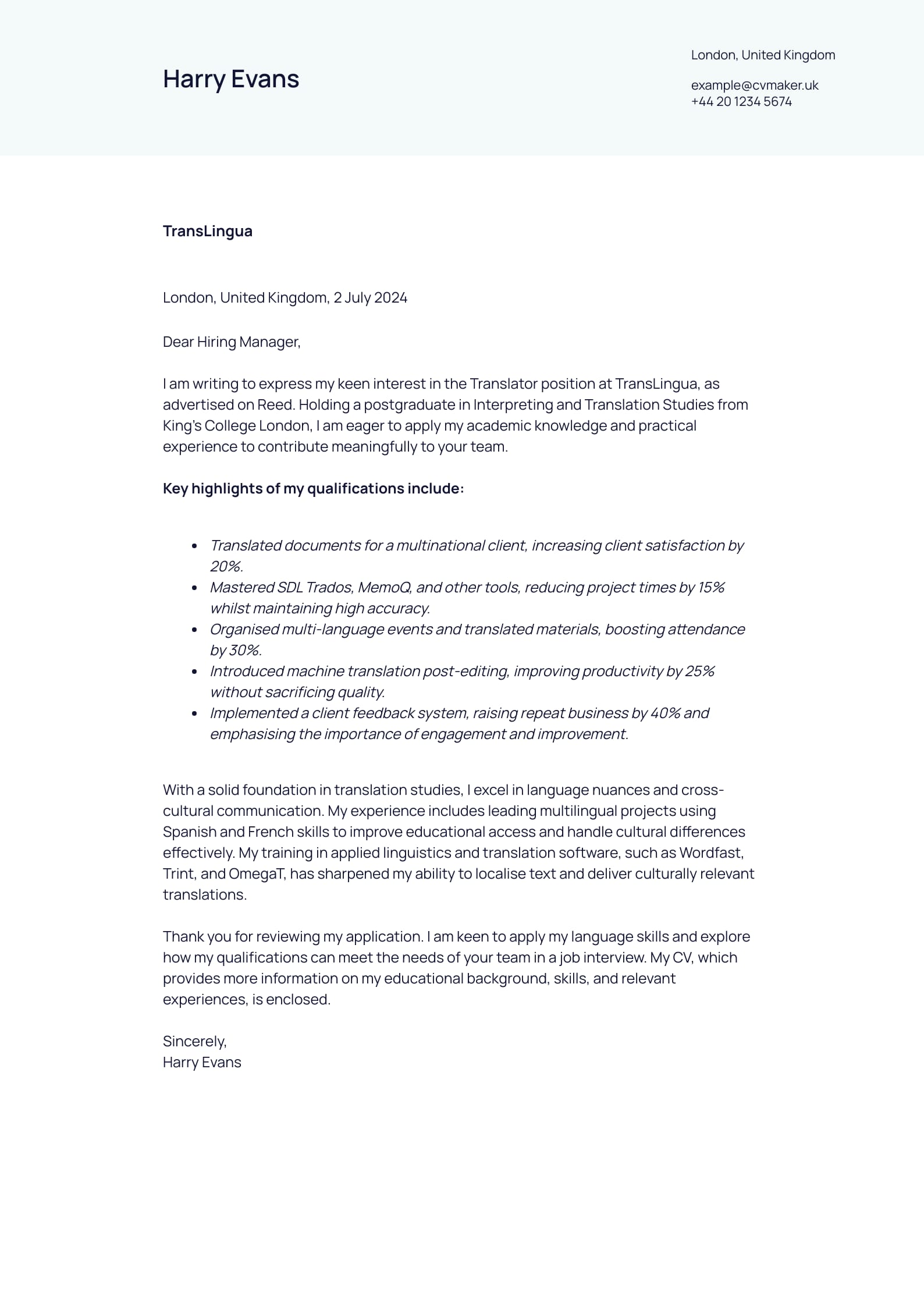
Volunteer cover letter template


Waiter or Waitress

Work Placement

Ready to write your cover letter but need help with where to start? We provide all the guidance and inspiration you need below, alongside our professional cover letter templates . We understand that crafting this vital document to accompany your CV can be daunting; therefore, we created this page to help you navigate through the fierce UK market.
Common letter types include the following:
Application letter
Motivation letter
Short cover letter
Letter of interest .
In this article, we delve deeper into each format, share the key differences between an application letter and a motivation letter and offering optimal writing strategies. Furthermore, we've prepared the best cover letter samples for various specific jobs and included an example of a concise motivation letter to inspire your own writing. Whether you are a student , graduate or seasoned professional, we've got you covered.
Kickstart your career by crafting your cover letter today
Create your first cover letter and impress employers with a professional cover letter template .
What is a cold cover letter?
Do you aspire to work for a specific company but have noticed a lack of appealing vacancies on their career page? One effective approach is a letter of interest, also known as a cold cover letter, which expresses your desire to work for them. Below, we demonstrate how to do this effectively. In all of these situations, there are fundamental considerations when composing your letter, such as:
What types of information should a good motivation letter contain?
What should an excellent cover letter example include?
How should you structure an application letter?
What is the best way to end a cover letter ?
How do i write a cover letter with little to no experience ?
Explore the biggest industries in the UK or highest paying jobs to help you choose your ideal career path.
Motivation letter vs. application letter
Whatever your situation, it's helpful to know that the motivation and application letters both serve the same purpose: to land an interview. Below are the main differences between an application letter and a motivation letter.
What is a motivation letter?
A motivation letter should explain why you think you are the right person for the job or want to work at the company. In a motivation letter, you're trying to convince the reader why they should hire you.
What is an application letter?
An application letter asks an employer to review your CV and consider you for a specific role. A motivation letter has the same function, but the application letter allows you to go into more detail about the contents of your CV. However, it doesn't explain your motivation or why you would like to apply for a particular role.
An example of where it would be more appropriate to write an application letter is when you're looking for an internship or work placement. You’d want to gain work experience, boost your CV, or earn academic credit. So it's essential that your cover note convincingly emphasises your skills and conveys that you wish to develop them further.
The difference between a motivation letter and an application letter
The main difference is the intention behind writing it. A motivation letter emphasises why you're applying for the job, whereas an application letter explains what you have to offer. A motivation letter is often an application letter, but an application letter isn't necessarily a motivation letter, so people often write something that combines elements of both. This strategy is a great choice, too, because it allows you to give your letter more substance.

Explore our collection of CV examples to find your match! From a simple CV template to modern CV examples to get you noticed.
How do you write a motivation letter?
There is no one-size-fits-all formula for writing a motivation letter. However, a good motivation letter should be unique and personal to stand out. Experts at CVMaker advise writing an individual letter for each job application and tailoring it to the company and type of jobs you are targeting. When creating your letter, consider the following tips:
Always research the company you're applying to by gathering as much information as possible. Use relevant information from your search in your motivation letter. It shows that you went above and beyond to customise your letter.
If you mention your achievements or results, try to support them with evidence and facts. Saying you have achieved good results without providing the details and context fails to demonstrate your true value.
Avoid buzzwords if you need clarification on what they mean. Use everyday language, but ensure it's professional, well-written, and grammatically correct. Choose the best font for a cover letter with your helpful guide!
Refrain from mentioning your areas of weakness. It's good to be aware of these but refrain from drawing attention to them.
Highlight your good qualities, but try not to appear smug. Draw attention to your skills in a modest way.
Don't go into too much detail. Hold back some pleasant surprises that you can reveal in your job interview. Think of this extra information as a trump card you can play when you meet in person or on a video call.
Stand out by explaining, as uniquely as possible, why the new position would be a challenge or why something is your passion.
It's best to keep the length to one side of an A4 letter (8.5x11). Sometimes, a short cover letter will make a more significant impression than a long, wordy one.
What to do when sending your letter?
These days, most correspondence is sent digitally, for example, via e-mail. It is important to remember that the person who receives your job application might be one of many who review your cover letter and CV. For that reason, consider addressing it to whom it may concern. Always ensure both documents are neatly formatted and easy to read when they're printed out or sent digitally. Always send a short message with the attachments, explaining the role you are applying for or the reason for the mail with an overview of the attachments you included. Read more about how to send a CV via email .
What to write if you've already spoken to someone at the company?
It’s always helpful to add background information and context regarding your application to ensure everything is in order. See the examples below.
I spoke briefly with [ contact name] yesterday about the position of [ job title]. Further to our conversation, please find attached my CV and cover letter. I look forward to your response.
What to write if you've not yet spoken to a contact?
Please find attached my CV and cover letter expressing my interest in the position of [ job title]. I look forward to your response.
4 tips to prevent errors on a cover letter
1. always check your spelling.
Make sure your letter has no spelling or grammar mistakes. Go over the text with automated spelling and grammar-checking software or a word processor like Microsoft Word or Google Docs. If possible, have someone else read it over for you as well. It would be a shame if your application were rejected because of avoidable errors. Read more about how to write a good cover letter .
2. Follow a clear structure
Now you know the types of cover letters and when to use each, what next? The goal remains the same whether you send a letter of interest, a motivation letter or an application letter. That goal is to be invited for an interview, eventually getting you the desired position. All types have more or less the same structure, but the difference lies in the content. Discover the ideal length for your cover letter .
3. Have a strong introduction
When thinking of how to start your cover letter, remember that a good opening will always make a lasting impression regardless of the type of letter you write. Try to think of something more memorable than a standard “In response to the job posting on LinkedIn” introduction. For example, you could name a specific detail about the company that caught your attention or introduce yourself professionally and distinctively. Take a look at our sample letters for some good cover letter examples. Follow these tips to start your cover letter with a compelling introduction.
4. Content is key
The middle section of your letter depends on which type of cover note you've chosen to write. If you are looking for a sample cover letter, explore our customisable cover letter examples to get you started.
Option 1: Application letter
A good application letter will detail your work experience, skills, and knowledge. It should also highlight your achievements and give brief details about them. You can think of this as a way of providing deeper insight into the content of your CV. Your letter should explain how your skills and knowledge will benefit your potential new employer.
Option 2: Motivation letter
If you've chosen to write a motivation letter, the middle section should convince the reader why you're the best person for the job. Still, more importantly, it should explain why you want to work at that specific company or organisation. An original motivation letter that answers the why question clearly will make a good impression. You'll find an example of a motivation letter later in this article.
Option 3: Letter of interest
If you're making an unsolicited job application to an employer with no specific job vacancy, the key is to convince them that you want to work with them. It's much harder to persuade a company to consider you when they aren't actively looking for someone, so you must go into more depth about why you want to work for them.
Transform your application with a persuasive cover letter
How do you structure a cover letter.
The layout of a cover letter is made up of a relatively standard set of contents. Below is an elementary and straightforward cover letter template for you to fill in with your details, which is a significant first step to getting noticed. If you need further inspiration, you can see some CV Maker examples of how it's done.
Personal details
Introduction
Closing statement
Learn more about how to structure your cover letter.
What is a letter of interest?
A letter of interest is an unsolicited application letter expressing your interest in working for a particular company. This is an option when you would really like to work for a company, but they don't have any job openings. The fact that they aren't actively looking for new staff right now makes things a bit more challenging. However, your letter of interest should clearly state why you want to work for the company and that you would like to be considered for future opportunities. Read on to find out how to write a letter of interest and the steps you can take to ensure it's effective.
1. Make sure to do your research
If you're interested in a particular company, but there are no positions available, it's up to you to find out what information would be in the job listing if it did exist. One way of doing this is by studying the company's website.
2. Reach out to the company
Once you've gathered relevant information, reaching out to a recruiter or hiring manager on LinkedIn or via the general contact form on the company website is a good idea.
3. Find out the name of the contact person
If the company welcomes unsolicited applications, ask for the name and e-mail address of the person you should address your letter. During the call or email, explain what kind of work you would like to do and find out which job title the company uses. You can then use this title in your letter and send it directly to the right person.
Advantages of sending a letter of interest
You're applying for an unadvertised job, so there's a good chance that, right now, yours will be one of just a handful of letters, or maybe even the only letter, the recruiter reads.
Expressing your interest with an unsolicited job application shows enthusiasm and initiative. These are qualities that most companies and organisations appreciate. It also allows you to stand out positively, making you more likely to be remembered.
Should the company have a vacancy shortly, they'll already be aware of your interest. They'll contact you before advertising the vacancy if they think you're a good fit. The recruitment process costs time and money, and your letter could help make the process easier.
How to write a letter of interest
The contents of a letter of interest are roughly the same as those of a motivation or application letter. Still, the difference is that a cover letter for an unsolicited job application should clearly state who you are and what you can do for the company.
Important things to include in your letter of interest:
Refer to your telephone conversation and mention the name of the person who took your call.
Make it clear to which position you're applying.
Introduce yourself by outlining your education, work experience, and soft and hard skills.
Explain why you want the job and why you want to work for this specific company.
Learn more about how to write a letter of interest.
Using the same letter to apply to several companies will give you the illusion that you've submitted many job applications, and generic letters are very easy to spot. You may have sent many applications, but you might get many rejections. When you're applying for jobs, quality beats quantity.
Start creating your CV
Create a professional CV quick and easy with our advanced CV Builder
Land the interview for your dream job with CVMaker
Effortlessly create your professional CV within 10 minutes and download it whenever and wherever you want!
Increase your chances of landing your dream job with CVMaker.

IMAGES
COMMENTS
Oct 19, 2023 · Following these helps ensure your cover letter comes across as informative, confident and easy to read. There are certain steps to follow to make sure you write the perfect cover letter for your next job application. Consider following the guide below to write the best cover letter possible: 1. Begin by introducing yourself
A cover letter should include the following parts: Header; Salutation; Introduction; Body paragraph; Closing paragraph; Letter ending and signature; The following cover letter samples and examples will show you how to write a cover letter for many employment circumstances. Browse cover letters by job title for inspiration. (Get more cover ...
Aug 15, 2024 · Five cover letter examples Before writing your cover letter, it's worth studying some cover letter examples to help you generate some ideas. This also gives you an idea of structure and specific points to include. See below for a selection of five example cover letters: Example 1: Office Assistant
Nov 25, 2024 · Cover Letter Examples UK. A cover letter sample will help you understand the style and structure of a cover letter. We’ve carefully curated a collection of cover letter examples tailored to jobs and industries, along with writing guides. Choose your cover letter example and take the first step towards advancing your career.
Because although you won’t have to completely rewrite your cover letter each time, making small changes that make it tailored to the job are essential. Finally, your cover letter will always look different depending on your situation – whether you’ve just graduated, you’re coming back from a career break, you’re looking for part-time ...
Browse a wide range of UK templates and good cover letter examples suitable for recent graduates, experienced professionals, and everyone in between. Our easy-to-use cover letter tool allows you to quickly generate a cover letter for your desired position or customise one of our examples to showcase your unique skills and expertise.